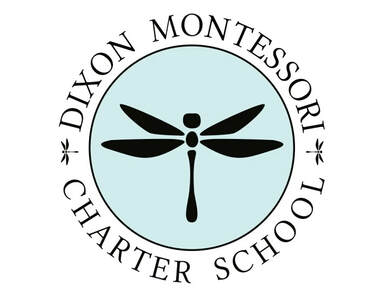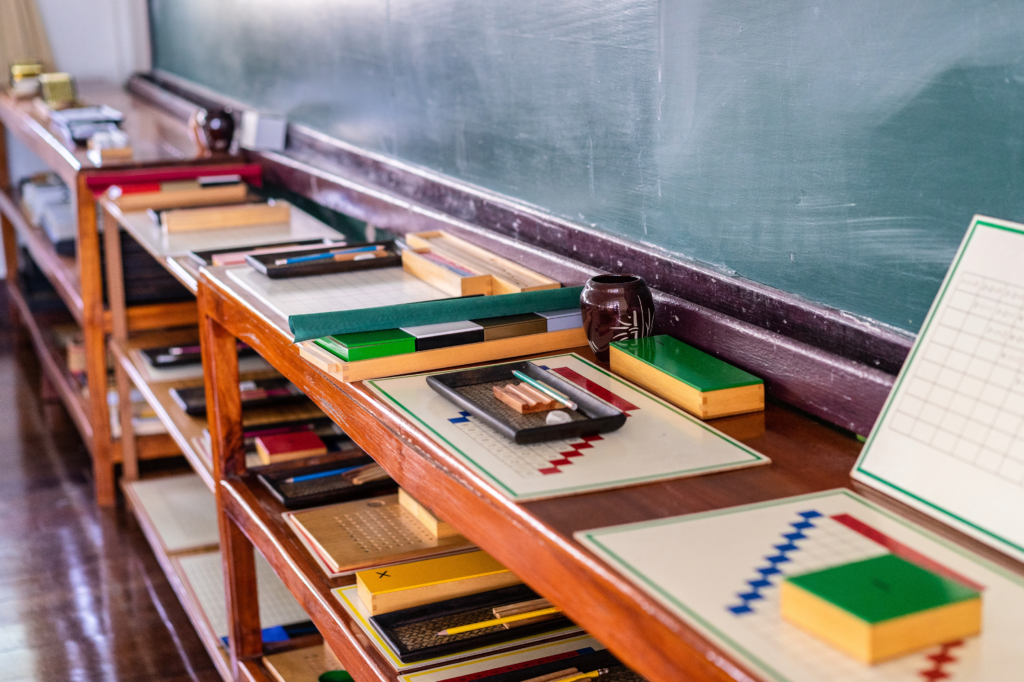
At Dixon Montessori Charter School (DMCS) in California, Reading Specialist Heidi Hefner brings over 20 years of teaching experience and a strong commitment to helping students become confident, capable readers.
In this spotlight, Heidi describes how the school’s use of the SIPPS program in grades K–5—alongside their Montessori-based approach—has supported students’ reading growth, built foundational skills, and helped students reach grade-level proficiency. She also shares data showing the impact of SIPPS.
Tell us a little about yourself, your school and district, and the students that you serve.
My name is Heidi Hefner, and I am the Reading Specialist at Dixon Montessori Charter School (DMCS). This is my 21st year of teaching, with 12 of those years spent at DMCS. Over the course of my career, I have taught grades 2–5 and developed a strong passion for helping students become confident readers.
I live in Dixon, California, with my husband, two children, and our 11 pets. Without a doubt, reading has always been my passion, and I feel incredibly fortunate to share that love with my students every day.
Dixon Montessori Charter School is a TK–8 community dedicated exclusively to students and learning. DMCS emphasizes academic excellence and discovery. It does so within an environment that nurtures each student to achieve their individual greatest potential by blending Montessori education with California Common Core State Standards. DMCS supports its mission through low teacher-to student ratios and family participation.
Additionally, DMCS uses multi-age classrooms, a diverse curriculum, and differentiated learning for each student. Our school is a tuition-free public school committed to developing socially responsible life-long learners.
A Montessori School
We are part of an innovative, child-centered teaching movement that has grown for more than 100 years worldwide. Montessori schools are based upon the educational methodology of Italian physician, Maria Montessori. She is remembered as one of the most practical, visionary, and progressive minds in the history of modern education.
In the tradition of Maria Montessori, our school offers a pleasant and nurturing environment in which children learn at their own pace, pursuing those things that interest them most. To illustrate, middle school (grades 6–8), students progress with the overall philosophy of Maria Montessori in a project-based learning environment, developing their self-motivation and independence.
Dixon Montessori provides purposefully designed experiences that lead to our Expected Student Learning Results or M.E.R.I. T.: Motivated Learners ~ Effective Communicators ~ Respectful Citizens ~ Innovative Thinkers ~ Technologically Skilled.

Witnessing Progress as a Reading Specialist
What is the most rewarding part of being an educator for you? What do you especially enjoy about your current role?
The most rewarding part of my job as a Reading Specialist is teaching students how to read. I find immense joy in guiding children through the fundamental skills of reading, such as phonemic awareness, sight words, phonics, and fluency. Witnessing a child’s progress in their reading journey is incredibly fulfilling. It represents not only their academic growth but also their confidence and independence as learners.
Witnessing a child’s progress in their reading journey is incredibly fulfilling, as it represents not only their academic growth but also their confidence and independence as learners.
I can relate deeply to the struggles that some students face in learning to read. I myself faced challenges with reading as a child. Consequently, that experience inspired me to become a teacher, with a focus on supporting children in overcoming those obstacles. Little did I know that one day, I would have the privilege of being a Reading Specialist, where helping students with their reading development would be my primary focus.
I am passionate about providing direct, explicit instruction in reading. I know how essential it is for building a strong foundation. Indeed, it is a blessing to be able to make such a significant difference in the lives of my students every day. I am truly grateful for the opportunity to support them on their journey to becoming confident, capable readers.
A Growing SIPPS Implementation Across Grades K–5
How long have you been implementing SIPPS?
I have personally been using various versions of SIPPS for the last 20 years. This has allowed me to see firsthand how effective this program can be in supporting students’ reading development.
As a school, we’ve been implementing SIPPS in grades K–3 for the past 2 years. We’ve also introduced it in grades 4–5 for the past year. It’s been exciting to see the positive impact SIPPS has had on students across different grade levels. I’m looking forward to continuing to build on this success.
What do you appreciate about SIPPS?
What I appreciate about SIPPS is that it meets students exactly where they are in their reading journey. The placement test helps identify each student’s current skill level. Teachers know exactly where to start and can target the specific skills they need to develop in order to become confident readers. SIPPS allows us to differentiate instruction and provide each learner with the personalized support they need. This ensures that every student receives the instruction that is best suited to their individual needs.
I also love that once students become readers, SIPPS continues to challenge them. It includes a word study component that focuses on teaching root words, prefixes, suffixes, and exposes students to a wide range of vocabulary. This not only helps students expand their vocabulary but also deepens their understanding of how words are constructed, supporting them in becoming more skilled and fluent readers.
The Impact of SIPPS on Other Learning
What have you noticed about your students’ learning and engagement? If a particular story from your classroom comes to mind, please share it!
I’ve noticed that SIPPS requires a lot of focus on the learner, but the beauty of the program is that it spirals and reviews skills consistently, which allows students to master sight words, sounds, letters, and digraphs. The repetitive nature of the lessons helps reinforce these skills. It’s been exciting to see how students internalize them over time.
They absolutely love the stories. I think everyone’s favorite time is always when we read the little storybooks or work on spelling. It’s such a joyful part of our day!
Since implementing SIPPS, I’ve observed Dixon Montessori students reading more fluently at younger grades, which is also positively correlating to a better understanding of math. It’s fascinating how developing strong reading skills can impact other areas of learning.
One area where I’ve seen particularly high engagement is with our older students when it comes to memorizing word definitions. They love learning about prefixes, like how “pre” means “before”. We’ve turned it into a fun competition to see who can remember the most word definitions. It’s amazing to watch their excitement as they challenge each other, and it really helps solidify their understanding of vocabulary.

Increased Confidence
One story that stands out to me is about a second-grade student. At the beginning of the year, this student was struggling with blending sounds and forming words. She had a hard time feeling confident in her abilities.
But after several months of SIPPS instruction, something clicked for her. One day, as we were reading a story together, I noticed she was decoding words effortlessly and even reading with expression. It was a small moment, but I could see the pride on her face when she realized how much progress she had made.
That shift in her confidence was incredibly rewarding. It showed me just how much of an impact consistent, focused instruction can have.
How has SIPPS affected or changed your own teaching and learning?
In the beginning of my teaching career, I used the Challenge Level of SIPPS while teaching grade 4. That was all I knew. When I moved down to grade 2, I brought my trusty manual with me, not realizing at the time that SIPPS had so many levels.
Once I discovered that SIPPS has different levels tailored to every learner, I was overjoyed! I quickly dove into studying the newer versions of the program on my own and began implementing it in small groups in my classroom right away.
Clarity Through Consulting
Looking back, I realize that in my early years of teaching, I didn’t fully understand how to teach reading as effectively as I could have.
SIPPS has truly transformed my approach. It has shown me how to break down each part of reading with explicit instruction and repetition, which has made such a difference for my students. The clarity and structure SIPPS provides have been invaluable in helping my students master foundational reading skills and gain confidence.
The clarity and structure SIPPS provides have been invaluable in helping my students master foundational reading skills and gain confidence.
I’m incredibly grateful to have found the SIPPS program, and to have had the opportunity to meet Collaborative Classroom Consultant Ann Leon. She has been an amazing trainer and mentor.
Over the last two years, as Dixon Montessori has implemented SIPPS in grades K–3, I’ve learned so much from Ann’s guidance. Her mentorship has helped me grow as an educator. I’m excited to continue improving my teaching practice with the tools SIPPS has given me.
Embrace the Process, Trust the Structure
What advice or insights would you share with an educator who is new to SIPPS?
My advice for educators new to SIPPS is to embrace the process and trust in the structure it provides. When I first started using SIPPS, I wasn’t fully aware of how powerful the program could be, but over time, I’ve seen the incredible impact it has on student learning. The key is to be patient and consistent, especially when starting out. SIPPS is designed to be systematic and repetitive, which is crucial for helping students build a strong foundation in reading.
Take the time to familiarize yourself with the different levels of SIPPS. Whether you’re working with younger students or older ones, there is a level that meets each learner where they are. Additionally, it’s important to start at the right level for your students. Using the placement test is essential for tailoring instruction to their needs.
Also, I highly recommend utilizing the resources and support available, especially if you have the opportunity to work with a mentor or attend training sessions. For me, working with Ann Leon, who’s been an amazing mentor, was invaluable. She helped me understand how to teach lessons effectively to ensure students master the skills.
As an illustration, as we approach the end of year two of SIPPS, our data shows a higher percentage of students leaving each grade reading closer to grade level.
SIPPS Longitudinal Study: Trimester 3 Year-End Data

Percentage of DMCS grade level students on target 2023-2024

Percentage of DMCS grade level students on target 2024-2025

I-Ready Data Trimester 3
As can be seen, the progress we’ve seen at Dixon Montessori has been truly astounding. This data reinforces how effective SIPPS is in accelerating reading development. It’s been incredibly rewarding to witness the growth and increased confidence in my students.
The more you use SIPPS, the more comfortable you’ll become with its structure, and the more you’ll see your students thrive as readers.
Related:
Learn about other California schools that are using SIPPS to help readers succeed.
